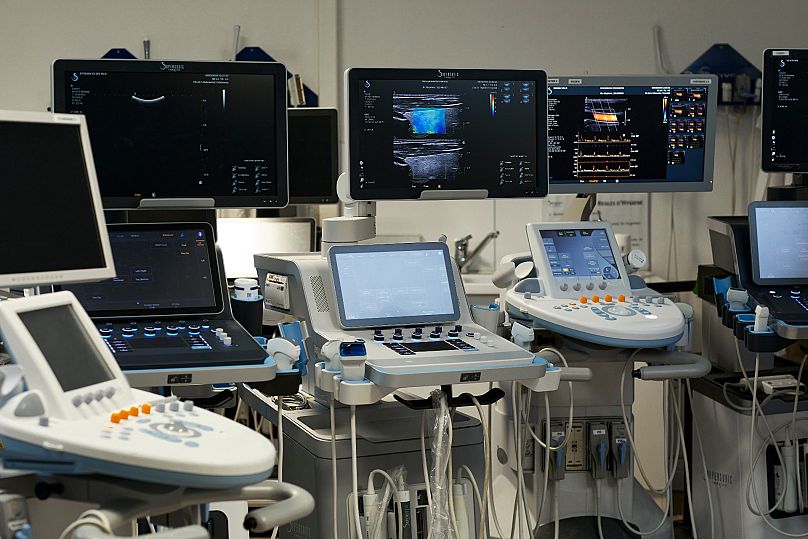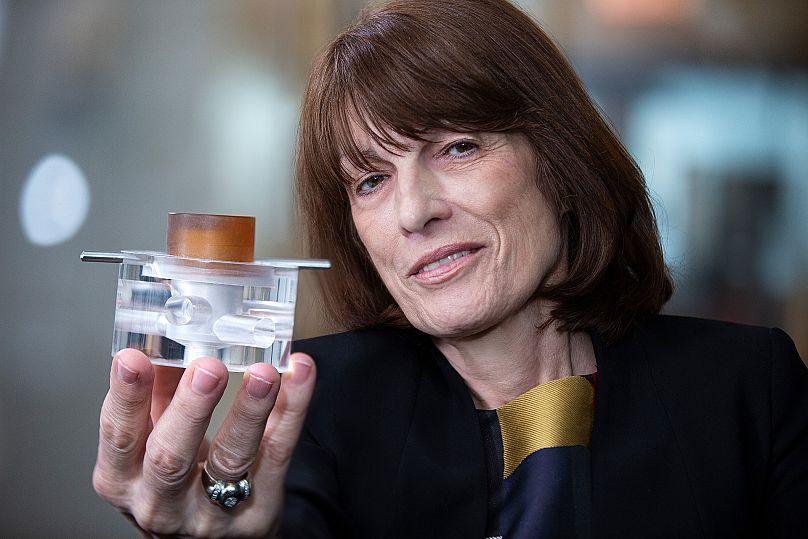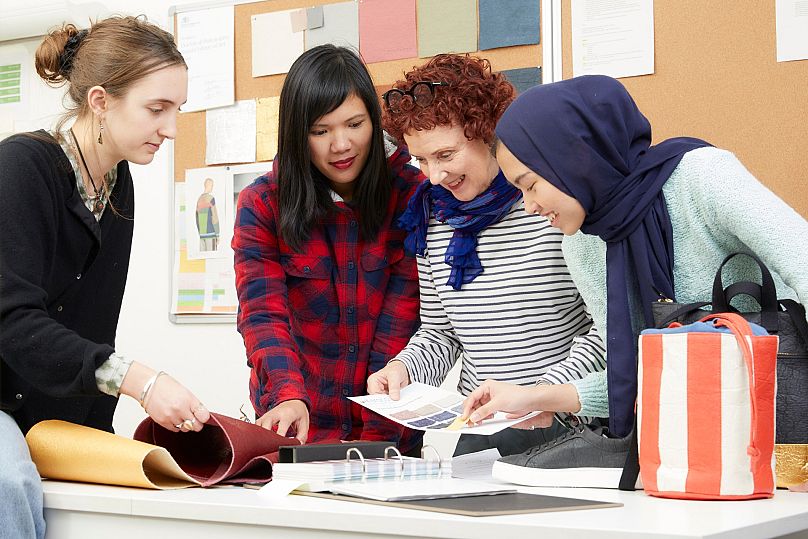As the global pandemic and climate continue to dominate headlines in 2021, it seems appropriate that this year's European Inventor Award shortlist features more groundbreaking health- and sustainability-related innovations than ever.
The annual awards are organised by the European Patent Office (EPO) and acknowledge the very best contributions to technological and societal progress. Launched in 2006, they honour inventors selected by an independent international jury.
The finalists from 15 different countries are nominated across five categories – Industry, Research, Non-EPO countries, SMEs (small and medium-sized enterprises) and Lifetime achievement – in addition to a Popular Prize, judged by members of the public.
"Each of the finalists is a trailblazer in their respective field. We are proud to honour their remarkable achievements in advancing technology, fuelling economic growth, and paving the way to a brighter tomorrow,” says EPO President António Campinos.
Honouring pioneers in the world of medicine
In what is likely to be a welcome advance for doctors everywhere, but particularly in developing countries, Italian Marco Donolato and his team in Denmark have created a low-cost, easy-to-use device that can detect dengue fever, zika and other infectious diseases. This fast and accurate gadget uses blu-ray technology to detect light emitted by magnetic nanoparticles clustered around target antibodies and requires only a single drop of blood for the analysis. Using this technology, Donolato and his team have also developed a five-minute test for detecting COVID-19 antibodies, which produces laboratory-grade results in 15 minutes.
Physicists Mathias Fink and Mickael Tanter from France have developed an ultrasound method that could eliminate the need for biopsies in many patients. Non-invasive and pain-free, the imaging system was originally devised to test the firmness of Camembert cheese, but was found to also detect differences in elasticity of soft tissue – an indicator in conditions such as breast cancer or liver disease. The method uses supersonic ‘shear waves’ and results are instantaneous.
US microbiologists Kim Lewis and Slava S Epstein have tackled what is said to be the oldest problem in their field – that 99 percent of microbes cannot be cultured in laboratory conditions. They have created the ‘iChip’, a small plastic ‘isolation chip’ perforated with millions of tiny holes that allow the separation of different strains of bacteria.
This will allow many more varieties of microorganisms to be grown in laboratories in their typical environment, and these can be used by scientists to discover new drugs that can tackle ‘superbugs’ immune to existing antibiotics today.
German genomics scientist Metin Colpan has spent most of the last 40 years pioneering developments used across a variety of fields, including gene sequencing, disease diagnosis, forensics, food safety and pharmaceutical therapies. His greatest breakthrough has been a technique that offers a quicker and simpler way to analyse genetic code than has previously been possible. In recognition of this he has been nominated for the Lifetime achievement award.
Colpan’s method enables researchers to rapidly extract and purify nucleic acids, namely DNA and RNA, in order to analyse genetic data, including in the detection of COVID-19.
Also nominated for her life’s work, Serbian-American engineer and university professor Gordana Vunjak-Novakovic has dedicated her career to regenerative medicine. She has developed a biomedical engineering technique that creates living biological grafts, growing new tissue from the patient’s own cells. This avoids the need for painful grafts from elsewhere on the patient’s body or other sources – such tissue is often rejected.
The method can be used to grow bone, heart and lung tissue and is used across the fields of transplantation, disease modelling and drug testing.
Apparently simpler but also with wide-reaching implications for patients’ health is Per Gisle Djupesland’s nasal delivery device. The Norwegian doctor studied the nose’s natural form and function to improve on traditional nasal spray pumps and potentially provide relief for millions of sufferers of migraine and rhinosinusitis, among other conditions.
The device uses the patient’s own exhaled breath to carry drug particles to target areas. Inserting the nosepiece into one nostril, the patient blows through the mouthpiece to deposit the medicine higher and deeper in the nose and sinuses than would be possible with conventional methods.
Indian-American researcher Sumita Mitra discovered a nanotechnology-based solution to the limitations of existing materials in dentistry. Previously, dentists working in tooth restoration had two choices: composite microfills, which looked good but were too weak to withstand the wear of molars, or stronger but less attractive hybrid composites.
Mitra replaced composite fillers with nanoparticles, which are smaller than the wavelength of visible light and do not scatter it, so the material retains its shine. She and her team then developed a technique to cluster these particles, making them easier to mould. These ‘nanoclusters’ have now been used in a billion dental restorations around the world.
Working for a sustainable planet
While working as a textile designer in the Philippines, Spanish entrepreneur Carmen Hijosa saw first-hand the costs of traditional leather production and resolved to find a solution.
"Pineapple leaf fibres are very strong, fine and flexible, and have been used in the Philippines for 300 years in traditionally hand-woven textiles," she explains. With leaves that would otherwise be discarded, she was able to create a soft, durable mesh replicating leather’s collagen fibres and now used by almost 3,000 brands worldwide.
German chemists Christoph Gürtler, Walter Leitner and their team also turned their sights on the circular economy, changing a waste product into a resource. Their work addresses the issue of how to utilise carbon dioxide in a positive way by harnessing it for plastic production and thus reducing the amount of crude oil needed.
Gürtler and Leitner’s technique uses chemical catalysts to drive reactions between CO2 and crude oil, producing polymers in an environmentally friendly way. This method can be used in the production of countless household objects, from mattresses to carpets, and in insulation, cleaning products and textiles.
As children, British brothers Ben and Pete Kibel became passionate about wildlife after watching the nature documentaries of renowned broadcaster Sir David Attenborough. "His films would often highlight the plight of endangered species," says Ben. "We've always been very aware that what humans are doing to the planet and to wildlife isn't sustainable."
As adults they turned their attention to marine creatures, and have created a cheap, reusable pod that shields the hooks used in longline fishing until these sink to a depth inaccessible to seabirds. Their research has shown that these prevent 95 percent of seabird deaths as by-catch when compared to conventional hooks.
Swedish inventors Henrik Lindström and Giovanni Fili have created a dye-sensitised solar cell that will “pave the way for a new generation of self-charging electronic devices,” according to António Campinos.
The technology can be printed in almost any shape, to fit a variety of devices. These can then generate power from any form of light, both indoors and outdoors. The solar material made by the superconductor inside the cell can be used in products such as bicycle helmets that use self-charging lights, and self-powered headphones.
Join the online ceremony
The finalists also include inventors in the fields of security and information technology, whose innovations range from DNA-based data storage to safe transfer to and from offshore platforms, and live fingerprint sensors to advances in organic semiconductors.
Held this year in a remote format, the ceremony takes place on June 17th at 1900 CEST and will be open to the public at www.inventoraward.org.




